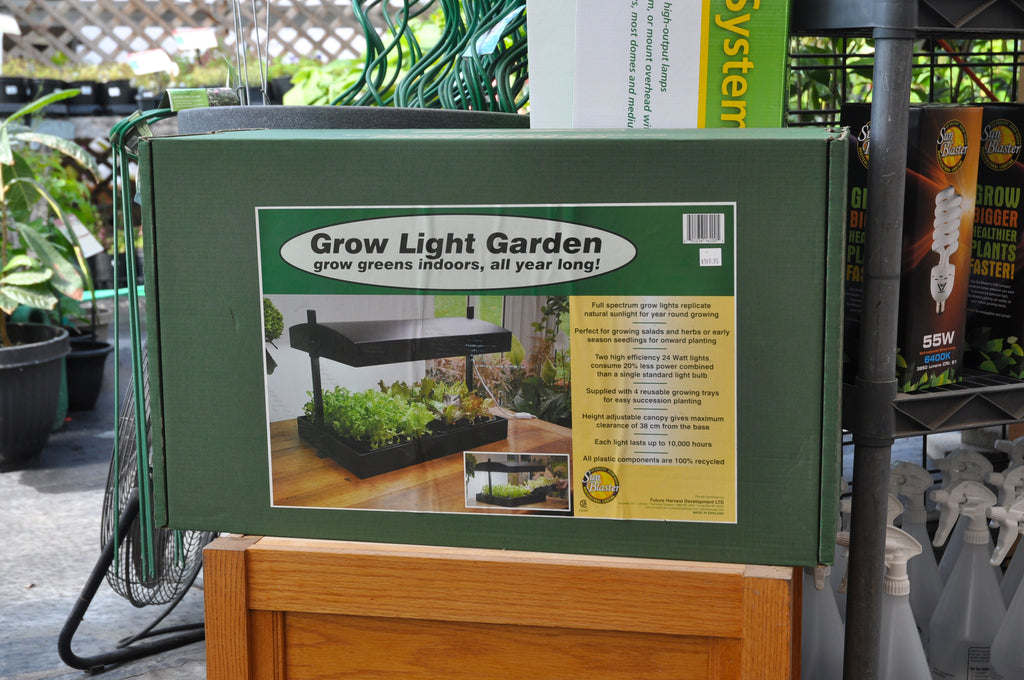*Warm climate perennial herbs - such as bay laurel, allspice, cinnamon, lemon grass, myrtle, certain types of oregano, broad leaf thyme and many others - are able to adjust to the lower light conditions of winter and are, by nature, long term plants that remain evergreen. These are the easiest to keep as herbal houseplants. The trick to keeping these through winter is (generally): pot in a well draining composty soil using a container with excellent drainage, cut back on watering, pinch frequently on stem tips and apply half strength organic fertilizer once per month right through winter. Supplemental full spectrum lights are not required for these plants, but productivity goes up with extra light (remember that even the sunniest south window has far fewer hours of daylight in winter compared to summer; hours of daylight = hours of potential energy to produce growth). So if productivity is an important goal, grow lights are very worth while.
Annual or summer herbs - such as basil, dill, marjoram, summer savory and many other popular selections - thrive on long sunny days and tons of heat. These plants will not perform without long days and heat (at least 21 degrees C), and therefore require some extra effort to grow indoors through winter. Because these are annuals (meaning they complete their lifespan in one growing season), summer herbs are short lived, but do grow quickly and easily from seed. This is an **opportunity for the home gardener.
Although annual herbs can be started and will grow if direct seeded to 6" pots on a bright windowsill during the winter, their growth rate will be sluggish. To make this a satisfying experience, add a simple and inexpensive full spectrum grow light (plus keep the plants somewhere warm, or use a heat mat). Lights should be on approximately 16 hours per day and off for 8 and no more than 24" above the plants; modern fluorescent grow lights cost "pocket change" per month to operate. Full spectrum lights are transformational when it comes to growing annual herbs indoors through winter.
This has been a quick look at the essence of starting an indoor herb garden. For additional information, we have a number of detailed articles on growing plants indoors, including specific herbs and spices, through out our blog. You can check these out by clicking here.
*Mediterranean herbs such as lavender, thyme, sage and rosemary do best when kept in a cool yet bright location vs. the warmer preference of subtropical to tropical herbs and spices.
**Another characteristic of these types of plants is their sensitivity to change of environment. So even if we coddled annual herbs in a greenhouse to get them started, they tend to die quite quickly when moved to the home setting during winter months. To avoid this disappointment we strongly encourage gardeners to start annual herbs from seed directly in the home setting where they will be growing. For this reason we do not sell these types of transplants during the low light season, but do stock quality organic seeds.
Dave Hanson has 20+ years experience helping local gardeners find success. He has co-developed Manitoba's only all-natural full service garden centre and had the opportunity to assist thousands of gardeners along the way. Dave has also been very active as a workshop presenter, speaker and media contributor for print and broadcast, including as the CBC Radio gardening columnist for the last 6 years. Dave brings passion, broad experience and a personal interest in getting to the heart of your gardening questions!







